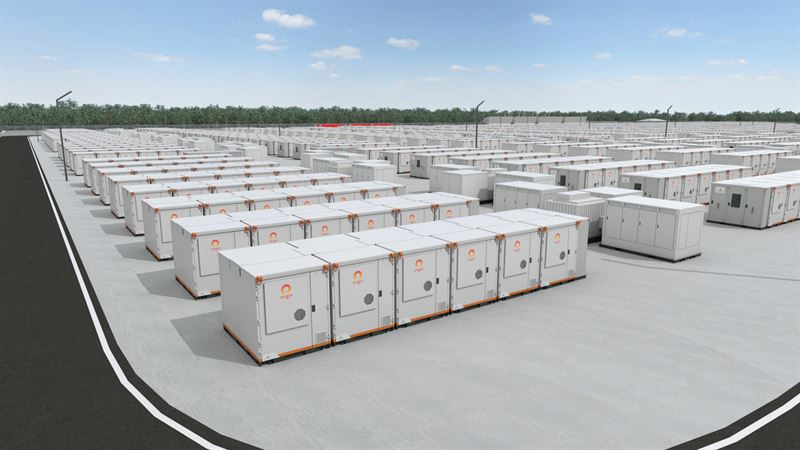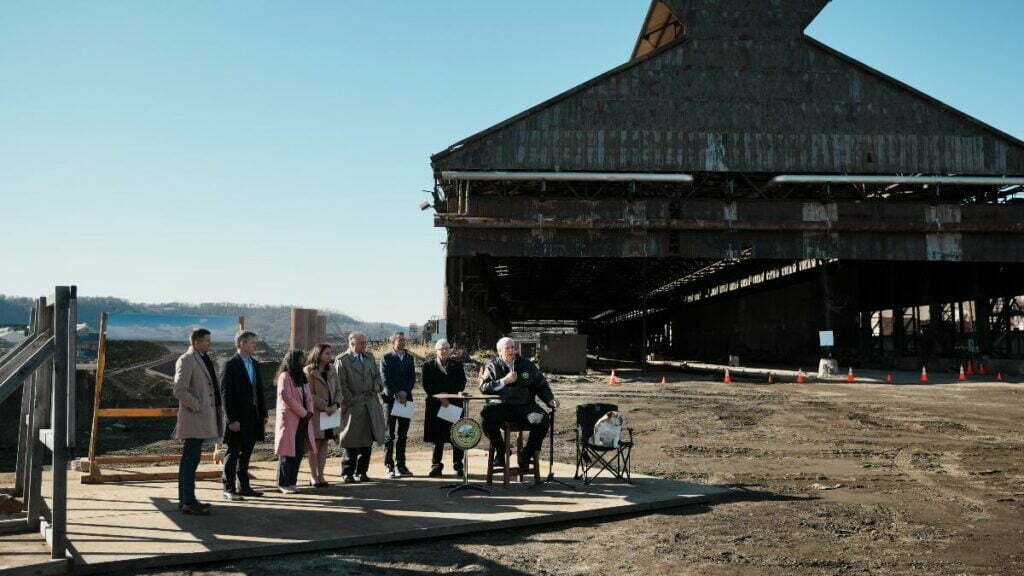The ‘Keynote Panel: The Inflation Reduction Act – What Changes Have We Seen Since Last Year?’ session at Energy Storage Summit USA last month. Image: Solar Media.
There is a long way to go before the new standalone storage investment tax credit (ITC) starts to really make a dent in the market, speakers and delegates at the Energy Storage Summit USA last month said.
Industry figureheads cited a lack of clarity over both the transferability of the tax credits, which became effective in January, as well as how to capture the 10% domestic content adder, one of three adders which together increase the ITC to cover 70% of a project’s capital expenditure (from its 30% baseline figure).
The other challenge is a lack of large financial institutions familiar enough with energy storage willing to step in and provide tax equity financing to take advantage of the ITC and its transferability between parties. Or rather, a lack of institutions relative to the gargantuan quantity of projects which can now take advantage of the ITC.
Because the ITC is monetised by directly reducing an entities’ tax bill, it can only really be used by very large institutions with hefty, predictable tax bills, usually banks, rather than renewable energy project developers themselves.
Energy-Storage.news reported last month that the complexity of tax equity financing means significant costs, which again favours larger institutions already familiar with the process.
‘Early days’ for tax equity to start having a big impact
“My personal view is that tax equity won’t be a sizeable contributor to the amount of investment in storage, or the cost stack, anytime in the next three to four years,” Ravi Manghani, director of strategy and market analytics for BESS firm LS Energy Solutions, told Energy-Storage.news.
“It might come sooner, and I hope it does, but if I had to guess, tax equity would start to become a meaningful portion of that cost stack in 2026-2027 at the earliest. Because it’s so complicated there’s fewer big tax equity buyers willing to step in, at the right price anyway.”
There was already a mismatch between the number of developers or project sponsors seeking tax equity buyers, and the appetite of financial institutions to come in and buy those credits. This is because energy storage is relatively new compared to wind and solar.
“The IRA’s inclusion of storage in the ITC increases that mismatch even more,” Manghani added. Prior to joining LS Energy Solutions, Manghani was an industry analyst for Clean Energy Associates and Wood Mackenzie Power & Renewables.
Panellists on the ‘Keynote Panel: The Inflation Reduction Act – What Changes Have We Seen Since Last Year?’ discussion on Day One of the event gave similar viewpoints that it will be a while before the ITC really starts having an impact.
Andrew Bernstein, founder and managing director of developer Kearsarge Energy, said: “We haven’t seen the modelling yet for the ITC. From a financing perspective it’s really early in this game and we’re all just understanding how to approach this. It will take time.”
Carl Fleming, partner for law firm McDermott, Will & Emery added: “We’ve heard about transferability but need to really understand how it works.”
One delegate said a tax equity buyer for a project took their ITC tax credits for ’85 cents on the dollar’, illustrating the stronger position of tax equity buyers versus those selling.
“There is a bit of uncertainty on the appetite of some of these large financial institutions considering the last few weeks,” they added, possibly alluding to the rapid downfall of Silicon Valley Bank, a major player in tax equity financing for clean energy projects (especially community solar, less so for storage).
Domestic content adder of the ITC
Battery storage system integrators interviewed at the event pointed to the domestic content aspect of the ITC still not being clear. The topic came up frequently during the two days and most expect Internal Revenue Service (IRS) guidance on exactly how it will work sometime during the current (second) quarter.
Asked about the IRA and what major uncertainty he saw in it, Anthony Carroll, president of system integrator Powin, said: “There are two parts that are still being worked out. One is the real role of the financial institutions and how that overall process is going to work, and two, what does it really mean to get local manufacturing? The wording around that is still unclear.”
Wärtsilä’s director of energy storage North America Kate Sherwood talked from the vantage point of having deployed what it claimed is the first project to take advantage of the new ITC, a 200MW project for developer Eolian.
“We are still awaiting guidance on the domestic content ITC. We think portions of the battery will qualify. There are many different parts of the system. For example, does our GridSolv Quantum unit (its containerised BESS product) need to be manufactured with US steel? It’s still an open question.”
The two other energy storage ITC adders are for for projects located in an ‘energy community’ (+10%), generally meaning a region which has felt the negative economic effects of fossil fuel plant retirements, and another for co-located projects in certain low-income communities (10-20%).
Tax-exempt entities’ direct pay option
One further consequence of the new ITC is that it may lead to tax-exempt entities like state and local governments, electric cooperatives and a host of other organisations becoming major, if not the main owners of clean energy assets in the coming years.
That is according to Andrew Waranch, CEO of developer Spearmint Energy, and several delegates agreed with the prediction when asked by Energy-Storage.news.
This is because only tax-exempt organisations can take advantage of a ‘direct pay’ ITC, meaning that the ITC can be paid out directly by the federal government rather than monetised through reducing a tax burden, since a tax credit is little use to a tax-exempt entity.
One of the speakers on the Keynote Panel which kicked off the two-day event was from that exact profile of tax-exempt organisation: Erika Bierschbach, VP Energy Market Operations & Resource Planning for public-owned utility Austin Energy.
She said that since the Inflation Reduction Act passed there is now a pressure for organisations like Austin Energy to own energy storage assets rather than contract them with a power purchase agreement (PPA), although she didn’t say whether this was because of the direct-pay element.
Continue reading











